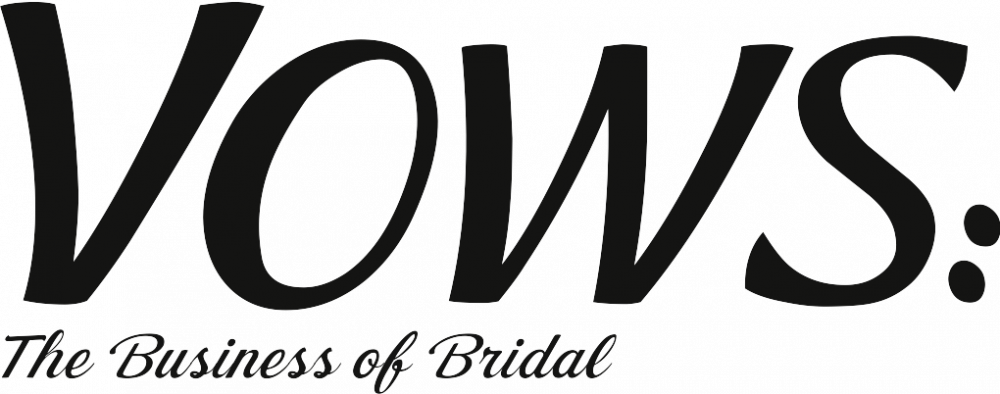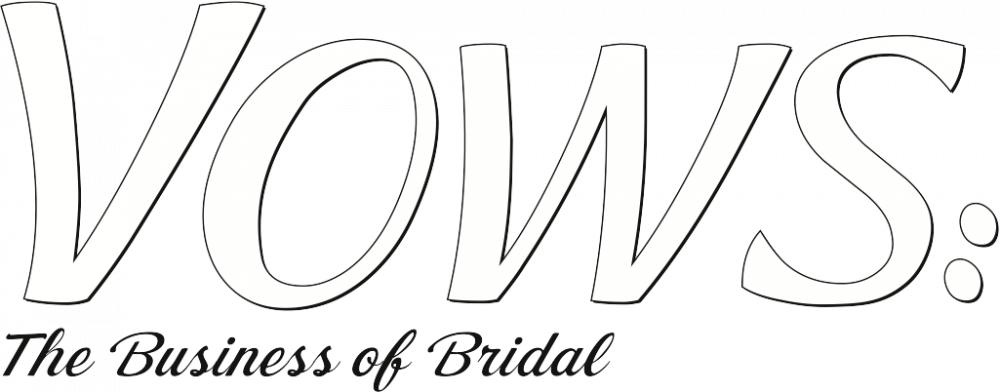Every bridal retailer knows a strong social-media presence is essential to attracting more clients, but creating that presence requires an effective strategy.
However, for many retailers, finding the time to craft and post quality Facebook, Twitter or Instagram updates proves challenging. As a result, social media gets neglected, with just a cursory pass each week.
The good news, though, is social media doesn’t have to be difficult or time-consuming. In fact, with a bit of preplanning and some tried-and-true content, it could be one of the easiest tasks you complete each week.
What to Say
In the past, VOWS has covered the importance of social media, emphasizing in particular how crucial it is to post quality content.
Given how often you need to post to build an effective social-media presence, though, it’s easy to just throw something out there for the sake of posting. Do not give in to this temptation! Instead, mix in newsy updates – like upcoming sales announcements or trunk show dates – with tried-and-true content that is easy to update so it doesn’t become stale.
“Anything remotely connected to weddings and formal events is fair game, which is great news because that type of content is easy to find and highly shareable,” says social-media strategist Angela J. Herrington of Marion, Ind. “Use a healthy mix of original versus shared content, images versus text-only, and keep your promotional posts down to 10 to 20 percent of your total posts.”
For ready made content, keep a library of posts highlighting previous customers’ weddings (with permission!), wedding-planning tips or checklists, designer profiles, quotes regarding love and/or weddings, and quick questions that spark interaction with your readers (Strapless vs. sleeves? Lace vs. sparkle? Beach wedding vs. garden wedding?)
“If you have trouble coming up with ideas, grab a couple of the top bridal magazines off the shelf and look at what they’re writing about,” Herrington says.
In addition, look through your own previous posts to see what’s tried-and-true with your followers.
“It is worth looking back at your analytics and seeing the hard numbers,” says Melissa Forziat, event manager and marketing consultant with Melissa Forziat Events in Seattle. “What were the most popular posts you ran? That should be a guide for the types of content that resonate with your target market.”
At Poffie Girls in Gastonia, N.C., marketing and advertising manager Alicia Waters says the following types of content have proved successful for the store’s social-media outlets: customers who have said “yes,” trunk show updates, staff selfies, celebrities on the red carpet, fashion trends, sales updates, special events notices, and staff updates from bridal markets.
Incorporating recurring posts into your content also can ease the workload. For instance, every Monday post a “What’s New” photo that highlights a new product in the store. Or spotlight a reception location every Thursday; this could be a great partnership opportunity with area reception vendors.
As well, participate in the standard reoccurring posts that trend on major social-media networks each week. In particular focus on:
#MotivationMonday – post a favorite quote or inspirational story.
#WeddingWednesday – provide wedding-planning or dress-shopping tips or info about a new style or particular designer.
#TBT (throwback Thursday) – post an old photo…of your store when it first opened, your own wedding day or a memorable customer. Don’t forget to share the story behind it!
#FF (follow Friday) – list companies or other notable accounts your fans should like or follow. Try to group them in themes. For example, one week post a group of florists, another wedding venues, etc.
Sharing standard but updated social-media posts like these give followers something to look forward to each week. As a result they will actively seek out your salon’s accounts just to see what you feature next.
How to Say It
Coming up with quality content for your social-media networks can be challenging enough, but it’s just part of the equation.
It’s important to create content that is tailored to the social network where you want to share it.
“Although it’s tempting to link sites like Facebook and Twitter to save time, this is a real no-no if you want your social-media efforts to look professional,” says Erika Taylor Montgomery, CEO and chief publicist for Three Girls Media Inc. based in Yelm, Wash. “If the same person is following your company on both platforms, getting the exact same update on different networks is akin to spam. Also, because of the 140-character limit on Twitter, if your Facebook post is longer than this, it will be cut off when it appears on the other platform.”
Instead, when sharing the same photo, article or blog post link, write an intro that works best for the social network where you post it.
“This allows you to tailor your update to each of the social-media networks’ etiquette,” Montgomery says. “For example, even though hashtags are effective on both Twitter and Facebook, they’re used slightly differently between the two sites.”
This is especially true with Pinterest, which relies on photographs to attract attention. When pinning posts on Pinterest, vertical photos get better results than horizontal pictures, which bodes well for wedding dress photos.
When pinning a link to a blog post, photos with text that preview the attached link perform better than regular photos. For examples, check out the Pinterest boards of your favorite dress designers, bridal vendors and wedding bloggers. Also, don’t be afraid to experiment with your own photos to create custom images.
“Canva is a great resource to package the content into the right size with easy, do-it-yourself graphic design features,” Forziat says.
When to Say It
For many bridal retailers, posting on social media occurs when you remember to do it. But to create a more effective presence, it’s crucial to post content on a regular basis.
Unfortunately, this can be a time-consuming process, and time is a valuable commodity. That’s where scheduling tools can be of assistance.
“Scheduling tools are the best!” says Lisa Millbrand, co-founder of Moxie Workshop in Bloomfield, N.J. “They save you time by enabling you to post a week’s worth of content at once and allow you to schedule the posts strategically, so they can post at key times for your market, even if you’re busy tending to your business.”
Some social networks, like Facebook, allow you to create and schedule posts within the network itself, while other social networks, like Instagram and Pinterest, have no scheduling capabilities at all.
When using scheduling tools, though, you can schedule posts across a variety of platforms, including Pinterest and Instagram. Examples of such scheduling tools include HootSuite, Co-Schedule, Buffer, Tailwind and Latergramme (see sidebar on page 114). They even allow you to post the same content with different lead-ins for each network.
With each scheduling program, there are free versions, free trials and paid versions, each with their own features and limitations. To determine which is best for you, don’t be afraid to experiment.
“I’d recommend trying a few with the free trials that most of them allow, and then decide which one works best for your needs and fits best with your budget,” Millbrand says. “Depending on which accounts you plan to manage through the scheduler, you may need to spring for the paid versions. For instance, the bulk of decent Pinterest schedulers are only available in paid subscription models.”
Knowing When to Say “When”
Even with preplanning and scheduling tools, staying active and current on social-media networks can still be overwhelming. If that’s the case, don’t be afraid to enlist help, just as Renee Vollmar, owner of Bella Sposa Bridal in Denville, N.J., did.
“In June, I hired a social-media manager who took over this giant task,” Vollmar says. “She does a fabulous job. I pay her a monthly fee, and she is not an employee and never really comes into the store. It was one of the best things I ever did. I know that she does schedule things, but I am – happily – not involved in those details.”
Vollmar says she does provide her social-media manager with some content ideas, but mostly leaves it to the pro to get the job done.
“She is not only experienced in the social-media field, but she also has a passion and love for all things weddings,” Vollmar says.
In today’s marketplace, building a strong and engaging social-media presence to attract customers requires time and quality content. By marrying tried-and-true content with effective scheduling tools, you can turn this daunting project into an easy-to-manage task that adds to rather than takes away from your day-to-day business.
Scheduling Social Media
Finding time to post on social media challenges even the most efficient bridal retailers. In order to be effective, social media requires regular updates with quality content, something that can be hard to do in the midst of running a bridal salon.
Thankfully, this task can be streamlined by utilizing scheduling tools that allow you to create social-media posts at one time for multiple networks and have them post automatically at scheduled intervals.
There are a number of schedulers available, many for free with the option to upgrade features for a fee. Here’s a closer look at today’s most popular social-media scheduling programs.
HootSuite
One of the most popular scheduling tools for social media, HootSuite offers three plans: free, pro and enterprise. The free plan is a good option for first-time users who are just getting started with scheduling tools. You can schedule updates on up to three social profiles, familiarize yourself with the analytics reports to see how your posts are doing and create special campaigns like contests using two free templates. As you become more comfortable with the service, you can upgrade to increase your scheduling options such as adding more social profiles.
Buffer
Like HootSuite, Buffer offers a variety of subscription plans based on your social-media scheduling needs. For instance, the free plan will schedule up to 10 posts on one profile per platform (Twitter, Facebook, LinkedIn and Google+) each month, and includes extras such as creating platform-specific images, scheduling posts as you peruse your own social networks, and link shortening and tracking.
Co-Schedule
This paid scheduling tool offers the ability to schedule social-media posts by allowing you to “drop and drag” your updates to an editorial calendar; essentially, just write out your post and drag it to the day and time you want it to post on your calendar. This service even allows you to create posts for your Word Press-based blog. You can access more advanced features with an upgrade.
Edgar
This paid service allows you to add updates to a “library,” where they are filed under a specific category like “What’s New” or “Love Quotes.” Next, tell Edgar what type of update to share when. For instance, want to share “What’s New” on Facebook every Monday at 1 p.m.? Go ahead. Need to Tweet your blog post each Thursday at 10 a.m.? Just fill out your schedule, and that’s it. And the bonus? Once an update is posted, it goes to the bottom of your library, where it can be recycled again. The only drawback? Right now, Edgar only works with Facebook, Twitter and LinkedIn.
Scheduling for Pinterest and Instagram
Both Pinterest and Instagram have limited the ability to schedule posts on their networks; in fact, unlike Facebook or Twitter, neither site allows users to create and schedule posts within the program itself. Therefore, you must use an outside scheduling tool to set up posts on these networks.
For Pinterest, Tailwind currently is the prevalent scheduling tool; it is a paid service, but you can get started with a free trial. Also, HootSuite users have the ability to upgrade their features to add Tailwind to their service.
Instagram is trickier, although services such as Latergramme do allow you to create and schedule posts. However, Instagram does not allow third-party access to its platform; therefore, while tools like Latergramme will notify you when it’s time to post to Instagram, you will need to actually post the update.




